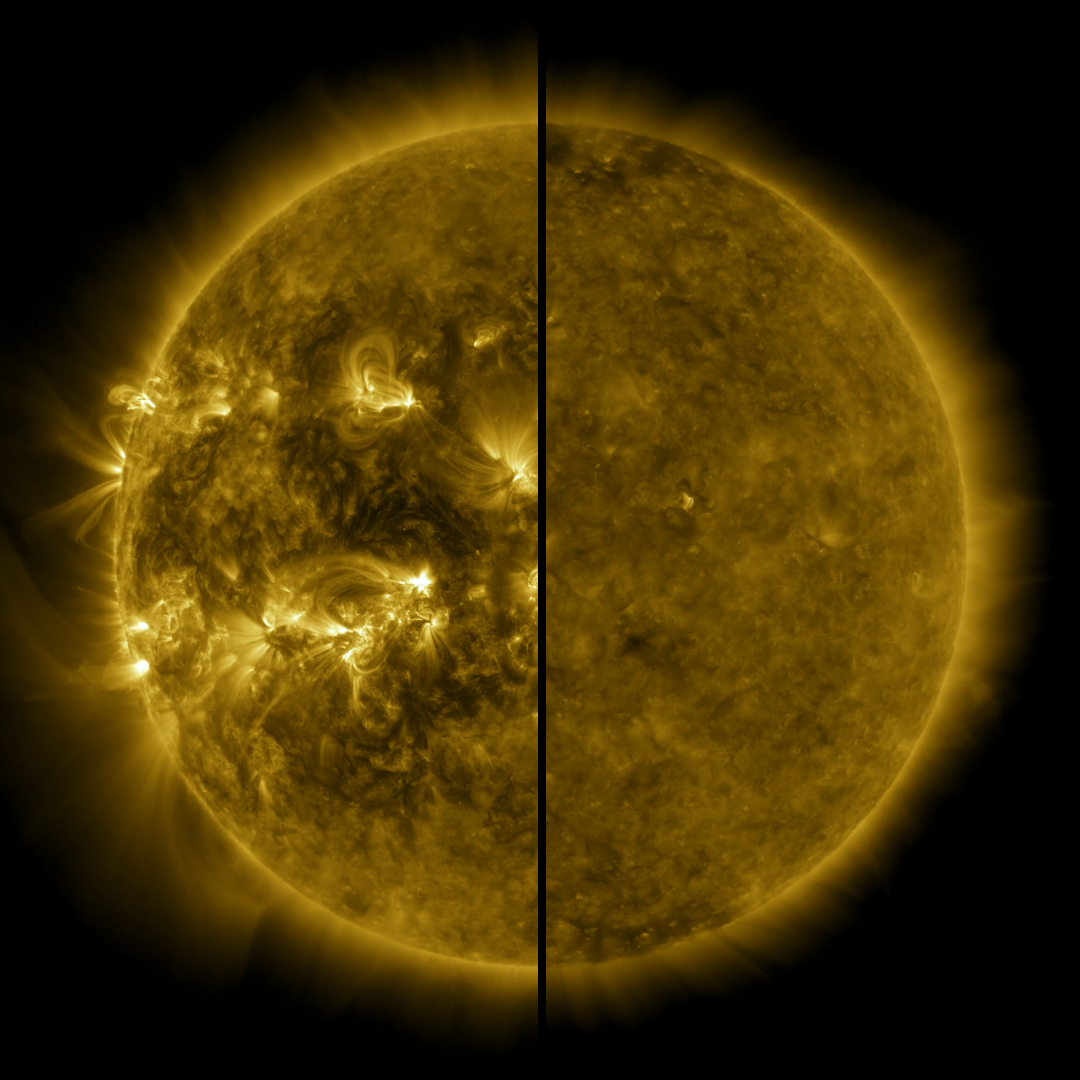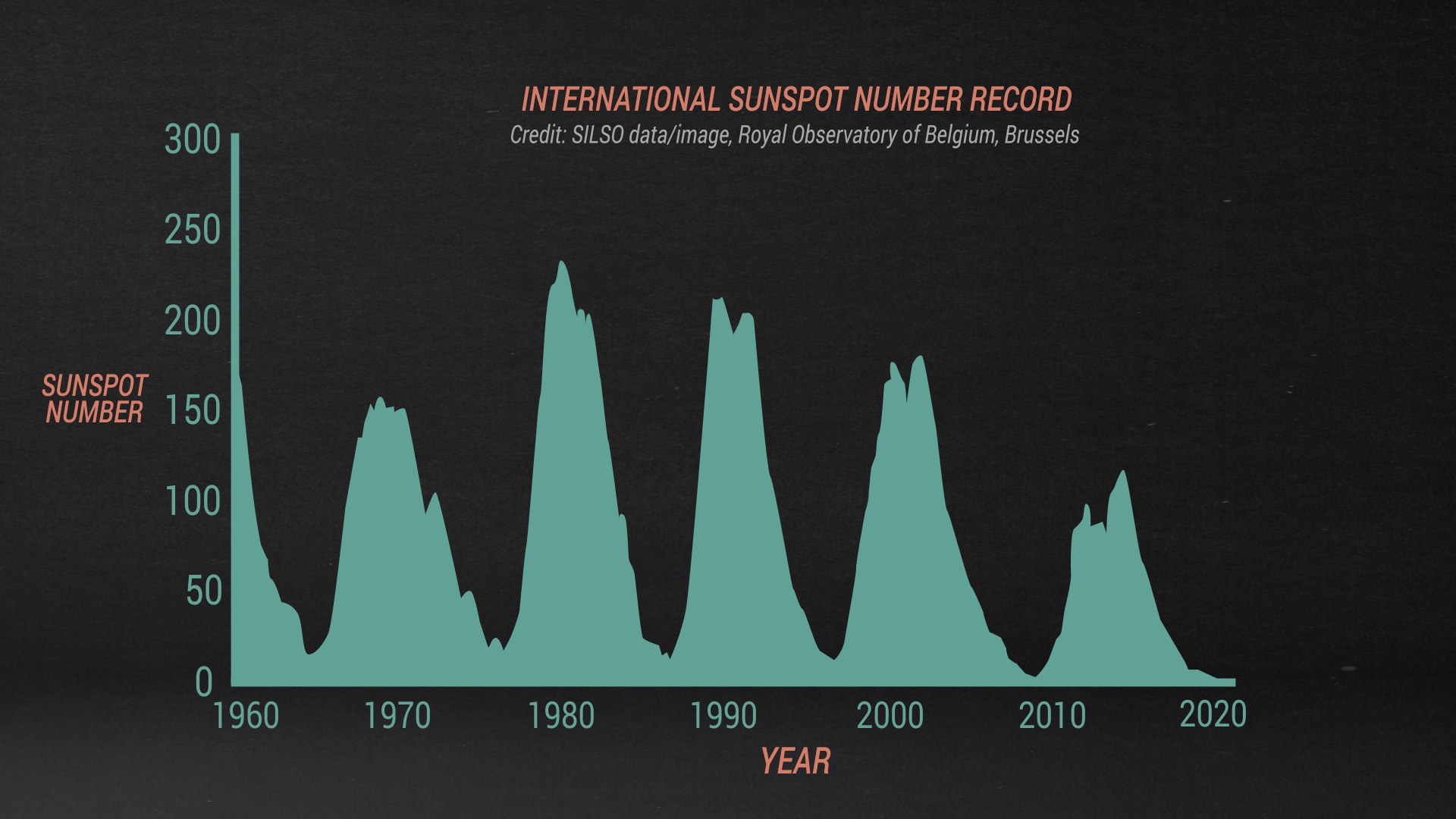The sun has begun a new solar weather cycle. It should be pretty quiet, scientists say.
The sun is officially nine months into a new solar weather cycle, scientists have confirmed, and it will likely look much like its predecessor, which ran from 2008 to 2019.
Scientists predict that the sun's new activity phase, called solar cycle 25, will peak in 2025 but will generally be a less active cycle, quite similar to solar cycle 24, which ended in December. The sun's weather, which follows an 11-year activity cycle, is a vital phenomenon to predict because its whims impact life on and around Earth, sometimes with devastating consequences.
"We are very excited to be here today to announce that solar cycle 25 has officially started," Lisa Upton, co-chair of the Solar Cycle 25 Prediction Panel and a solar physicist at Space Systems Research Corporation, a mission-support company based in Virginia, said during a NASA news conference today (Sept. 15) to discuss the findings.
Related: The sun's wrath: Here's the worst solar storms in history

Space weather trackers should expect the sun's activity to rise and fall in a pattern similar to that of the last 11 years, Doug Biesecker, a solar physicist at NOAA’s Space Weather Prediction Center and co-chair of the prediction panel, said. "Solar cycle 25 will reach a peak sunspot number of 115 in July of 2025," noting that a particularly active solar cycle usually sees a peak sunspot number over 200.
But just because the new cycle will be relatively quiet doesn't mean we should write it off, scientists stressed.
Biesecker pointed to a massive flare the sun produced in 2012, a few years before last solar cycle's peak. "We're saying cycle 25 is going to be like cycle 24 in terms of sunspots," he said. "Cycle 24 managed to produce an epic, hundred-year kind of solar storm, but it missed the Earth."
Get the Space.com Newsletter
Breaking space news, the latest updates on rocket launches, skywatching events and more!
And even right now, when solar activity is still quite low, we can still feel the effects of our sun, the scientists said.
"During solar minimum, solar activity does not finish, it just changes form," Lika Guhathakurta, a heliophysicist at NASA's headquarters, said during the news conference. "For example, galactic cosmic rays are at an all-time high in the space environment, and this has all kinds of implications for space exploration, space tourism, and the aviation industry."
Related: World's largest solar telescope produces never-before-seen image of our star

Another potential impact of a quieter sun is on space junk, which more active solar cycles can send into Earth's atmosphere to burn up. "A small solar cycle unfortunately means we're not going to be clearing out a lot of the orbital debris that a big solar cycle would take care of," Biesecker said.
In order to monitor and predict solar activity, scientists rely on a broad range of observations. Sunspot counts are the most straightforward — the more sunspots the more active the sun. How far north or south on the sun the earliest spots in a cycle begin to form can also give scientists a sense of what a season will be like, and right now, the sunspots that are popping up are closer to the equator, as is typical for quieter solar cycles.
Although the past few years have seen a host of new solar and space weather missions launch, Biesecker said that the prediction team didn't rely on data from those new spacecraft. "When we're trying to predict something that's got an 11-year cycle, new data is always useful, but it's hard to trust," he said. "So in general, the newer missions have not yet played a role in the process of predicting the cycle but that doesn't mean that they won't play a role in when we come around to trying to predict solar cycle 26."
Monitoring solar activity and making reliable predictions about upcoming solar cycles will be particularly important as astronauts once again venture out beyond the protection of Earth's magnetic field.
As part of its Artemis program, NASA is working to send astronauts back to the moon in the coming years, with humans stepping foot on the moon for the first time in five decades in 2024, the year before the solar cycle's predicted peak. That means that NASA needs good enough information about the sun's activity to feel confident it isn't sending astronauts into a dangerous situation.
To that end, the agency is also incorporating space-weather monitoring into its lead-up Artemis work, Jake Bleacher, chief exploration scientist for NASA Human Exploration and Operations Mission Directorate, said during the news conference, referencing plans to put solar weather instruments on the Gateway, NASA's planned outpost in lunar orbit that will support crew visits to the moon..
"The Gateway will be in place well before our astronauts are getting to the moon, so we'll have time to make some measurements and conduct some research there," Bleacher said. "We're trying to help add to the fleet of spacecraft that are measuring the sun and understanding this environment."
Email Meghan Bartels at mbartels@space.com or follow her on Twitter @meghanbartels. Follow us on Twitter @Spacedotcom and on Facebook.
Join our Space Forums to keep talking space on the latest missions, night sky and more! And if you have a news tip, correction or comment, let us know at: community@space.com.

Meghan is a senior writer at Space.com and has more than five years' experience as a science journalist based in New York City. She joined Space.com in July 2018, with previous writing published in outlets including Newsweek and Audubon. Meghan earned an MA in science journalism from New York University and a BA in classics from Georgetown University, and in her free time she enjoys reading and visiting museums. Follow her on Twitter at @meghanbartels.
-
Helio Reply
Some of the biggest events happen when the Sun thinks you see it napping.Victor Venetian said:Better not be quiet. I have a lot of money in a solar scope wasting away.









